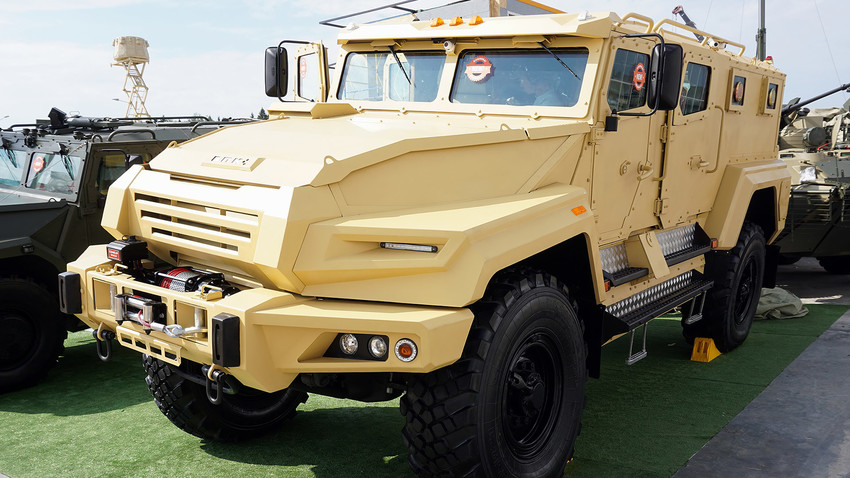Russia begins testing new armored vehicles for special forces

Engineers from the Russian design bureau Military Industrial Company (MIC) have begun testing the latest VPK-Ural armored vehicle, designed to transfer spetsnaz (special forces) to the most dangerous combat zones.
Although battlefield tests have just begun, one unit has already been sent to a foreign customer for combat runs.
“The vehicle is undergoing preliminary tests, and we have already sold one abroad. At the customer’s request, we made it a little smaller — for a crew of eight,” Alexander Krasovitsky, CEO of VPK, told Russian media.
The head of the corporation did not reveal the buyer, citing corporate secrets. Nor did he rule out increasing the order book for the machine if it proves itself not only on the training ground, but in real operations abroad.
What is the VPK-Ural?
The vehicle was first unveiled to Russia and the world a year ago at the Army-2019 arms show outside Moscow.
The machine, weighing 14.5 tons, is sheathed in armor thick enough to withstand a direct hit from the world’s most powerful large-caliber sniper rifles and machine guns. The VPK-Ural is 6.5 meters long and 2.5 wide, and has gun slots on either side for submachine gunners and automatic riflemen to fire on the move, or to transform the vehicle into a mini-fortress on the battlefield.
Inside, it can accommodate up to 12 soldiers in full combat gear (approximately 40-50 kg of weapons, armor, ammunition, and other kit on top of their own bodyweight). It is also fitted with anti-trauma seats, so called because if the vehicle rides over a mine, the seat absorbs a significant part of the impact from the explosion. Moreover, the underside is designed to protect against an explosive containing up to 6.5 kilograms of TNT.
In addition, the 14.5-ton beast can move at 100 km/h along the highway and travel up to 1,000 km on one refuelling when fully loaded.
MIC asserts that, like the Armata platform, the development is multipurpose and can be used as “a base for mounting various weapons,” without specifying what kind.
Future prospects
In the event of successful testing, MIC could win a contract under the Russian military’s rearmament program to 2027. The VPK-Ural is perfect both for frontline units operating in the Middle East and for the FSB and the National Guard, who need to smoke out militants in urban areas,” military analyst Dmitry Safonov told Russia Beyond.
As he explained, it is too early to talk about competitive advantages or disadvantages, since the company has yet to report the test results.
“We will be able to speak about contracts and orders after it gets a run in Syria. The vehicle's future is rather hazy at present, since the armored car segment is fiercely competitive both in Russia and abroad. So the VPK-Ural's fate will become known only in a year or two,” the analyst concluded.
If using any of Russia Beyond's content, partly or in full, always provide an active hyperlink to the original material.
Subscribe
to our newsletter!
Get the week's best stories straight to your inbox